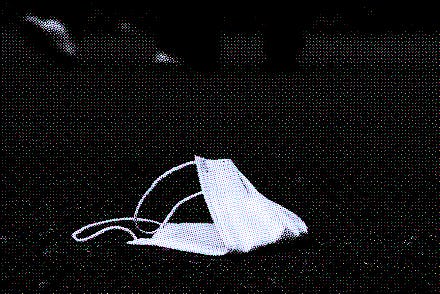There might finally be a good use for all those disposable masks
Researchers found the ubiquitous blue face coverings could be a big part of more sustainable construction projects.

There are masks on the ground everywhere you go. Oddly, we’d be much better off if those masks were in the ground. A new study published in the journal Material Letters found that materials from old masks could be used to strengthen concrete and keep it from cracking.
Researchers from Washington State University took the common, disposable medical masks that became so essential during our prolonged pandemic, cut them up, and tossed them into some common concrete mix. The result: The concrete tested out at 47% stronger than concrete that didn’t contain traces of masks. That made the material more resistant to cracking, which over time can lead to concrete splitting open.
So, okay. Yes, this sounds bizarre. But it makes sense if you know a bit about concrete. Microfibers, despite being tiny, hair-like filaments of plastics or other materials, make a world of difference when it comes to the quality of concrete. It improves the overall quality of the essential building material by combatting micro-cracking and shrinkage, which is common in the first 28 days after the concrete has been laid. Avoiding issues during that first month or so means less cement is needed, because fewer fixes are required and the overall lifespan of the material is improved too.
The thing is, microfibers tend to be expensive, so builders often go without it. Concrete is cheap to make — though ridiculously carbon-intensive, with the production of it accounting for as much as 8% percent of all carbon emissions.
But medical masks are basically just little rectangles of microfibers. They are made of polypropylene or polyester fabric that can be stripped down to microfibers and tossed into the cement mixture in order to make it stronger. And we’ve got plenty of them to spare! Environmental groups have reported collecting more than 100,000 masks from beaches across the country during clean-up efforts last year, and there has been an 80-fold increase in the number of littered masks since the start of the coronavirus pandemic. Letting these face shields waste away in the wild or in landfills poses a threat to the environment, as they decompose very slowly and release methane when they do. So if we could find a way to actually put them to use, considering they aren’t meant to be reused indefinitely as virus protectors, it’d go a long way toward minimizing some of the damage.